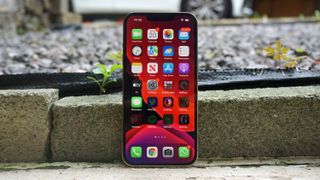
After five joyful years as an Android user, curiosity got the better of me: I’ve been using an iPhone 15 for the past week to re-immerse myself in iOS and make a stronger contribution to our iPhone coverage.
Overall, I’m impressed with last year’s base model iPhone. A lot has certainly changed since I said goodbye to my iPhone 5S in 2019, and in the decade between the launch of the iPhone 5S and iPhone 15, Apple has improved the iPhone in almost every way, from the screen size (4 inches to 6, 1 inch). inches) to battery life (a few hours to almost all day) and connectivity (USB-C!).
Unfortunately, there remains one thing that Apple hasn’t improved in the ten years of development between my previous and current iPhone, and it hasn’t been fixed with the new iPhone 16 and iPhone 16 Plus.
In the world of Android, 120Hz is the new standard for flagship and high-end phone displays, while budget options typically come with 120Hz or 90Hz displays. Nowadays, 60 Hz screens are reserved for tablets and the cheapest budget phones. The iPhone 16 and iPhone 16 Plus are, by modern standards, complete strangers.
The 60Hz debacle has been a topic of discussion here at Ny Breaking for years; “Please, Apple – don’t do this to the iPhone 15,” wrote Managing Editor for Mobile Computing Roland Moore-Colyer ahead of the phone’s 2023 launch, and Phones Editor Axel Metz found that 120Hz changed his entire view of iPhones when he switched to the iPhone 15 Pro.
Apple is more than capable of producing high refresh rate phone screens, as the ProMotion screens on the iPhone 16 Pro and iPhone 16 Pro Max demonstrate. In my experience, the smaller the screen, the more the benefit of a higher refresh rate is felt, as your eye has less room to work with to catch erratic movements.
To me, this is simply the most egregious example of Apple’s famously blunt product stratification strategy.
There’s simply no user benefit to equipping iPhones with 60Hz displays, and the Samsung Galaxy S24 shows us that a company can deliver a flagship phone with a 120Hz display for $799, the same price as the iPhone 16. This partially refutes arguments that focus on component price or production costs.
Why does Apple continue to sell iPhones with slow refresh rate panels? To me, this is simply the most blatant example of Apple’s famously blunt product stratification strategy, a deliberate choice to steer customers toward the more expensive iPhone 16 Pro and iPhone 16 Pro Max.
It’s a shame too – otherwise I’m impressed with the iPhone 15, and our iPhone 16 review found that Apple’s latest flagship brings the base model closer than ever to its Pro counterpart. It’s understandable that the standard and Pro iPhones need to be separated somehow, but here Apple continues to enforce distance by limiting the low-end model rather than increasing the premium offering.
This is an unfortunately common Apple tactic. The exact same problem applies to the iPad Air and iPad Pro, and the cheapest MacBook Pro is still sold with a paltry 8GB of RAM – decisions that drive people to more expensive options.
I’m far from an Apple hater — I’m a longtime iPad user and switched from Windows to Mac last year — but this kind of behavior is my pick for Apple’s worst bad habit. Apple has made a name for itself by thinking differently, but when it comes to refresh rates, I’m afraid everyone else is right.
